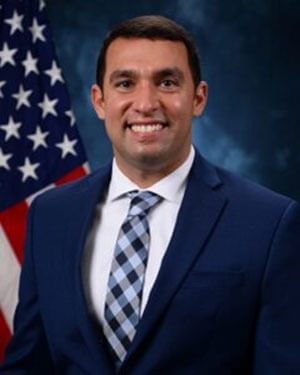
Bio
Dr. White is a professor of Geospatial Science with expertise in spatial data science and applied GEOINT. He currently teaches geospatial theory and analysis courses. His research interests bridge spatial analysis, AI applications, and remote modeling of environmental systems in the National Security and GEOINT spaces. He has worked in Haiti, Ecuador, Dominican Republic, and Greece, and Virginia, Nevada, Wisconsin, Arizona, California, Georgia, Colorado, and Utah, USA.
Education
CDS, Data Science Certificate, Harvard University (online) (2024)
FHEA, Fellow of the Higher Education Academy (2022)
PhD, Geography, University of Nevada (2017)
MS, Geography, Virginia Tech (2012)
BS, Geographic Sciences (Physical Geography, Human Geography foci), Geology minor, James Madison University (2010)
Professional Experience
Appointments
Assistant Professor, Geosciences, United States Air Force Academy (2021-present)
Data Science and Geospatial Analytics Advisor, Maplewell Energy (2021-present)
Assistant Professor, Earth Science, Utah Valley University (2018-2021)
Visiting Assistant Professor, Geography, Univ. of Wisconsin, Parkside (2017-2028)
Courses Instructed
Advanced Scripting for GEOINT
Artificial Intelligence in GIS
Autonomous System Navigation
GIS Data Science
Advanced Geospatial Analysis
Introduction to GIS
Introduction to Geotechnology
Oceanography GIS
GIS Design Studio
Advanced Explorations in GIS
Remote Sensing of Environment
Environmental Change Analysis
Physical Geography
Natural Disasters
Human Geography
World Regional Geography
Geomorphology
Biogeography
Paleoenvironments
Honors & Awards
Outstanding Educator Award, DFEG, USAFA (2025)
Gen. McDermott Immediate Impact Award, USAFA (2024)
Civ Employee of Q4, DFEG, USAFA (2024)
Civ Employee of the Year, DFEG, USAFA (2023)
Research Team of the Quarter, Social Sciences, USAFA (2023)
Publications
White JH, Henderson A, Larsen C, Kattman E, Peterson M, and Walliser J, (in review) Revisiting optimal geometry-based paths as navigated by a quadrupedal unmanned vehicle in the context of urban search and rescue. Submitted to Journal of Emergency Management.
Hoch E, Kim K, White JH, Hitt B (in review) Forecasting Daily Avalanche Occurrence in Colorado, USA using Spatially Implicit and Explicit Relationships. Submitted to Risk Analysis.
White JH, Walliser J, Henderson A, Marlowe J, Peterson M, Post AJ, Santana A (in review) Low-Resolution Thermal Imagery Captured Aboard a Quadruped Autonomous Vehicle Competes with Visible Spectrum in Identifying Humans Indoors. Submitted to Journal of Search and Rescue.
White JH, Philipps CS, Ormsby ZE, Bloom P, Snook J, Dinndorf S (in review) Spatial analysis reveals urban avoidance by Golden Eagles in the west-central Great Basin, USA. Submitted to Journal of Raptor Research.
Frank T, White JH, Aldred J, Catchpole M (accepted). Method to determine qualitative resource allocation for HVAC component sustainment. Submitted to United States Patent and Trademark Office. Serial Number 19/025,029.
Cabonce M, White JH, SM Mulholland (accepted). Predictive Modeling of Façade Material Degradation Across U.S. Climates. Submitted to Journal of Architectural Engineering.
White JH, Radil SM, Philipps CS, Irmischer IJ (2025) Using terrain-derived indices and environmental metrics to examine the spatial context of undocumented immigrant mortality along the USA-MEX border. Applied Geography.
Frank T, Aldred J, White JH, Catchpole M, Cabonce M, Boulware S (2024) Exploring environmental impacts on HVAC infrastructure degradation rate. Sustainability, 16(1723):1–19.
White JH, Philipps CS, Chandler LB (2023) Using airborne thermal imaging to understand American Coot movement patterns in a hot spring refugium during winter. Wetlands Ecology and Management, 31(1):875–886.
Frank TE, Aldred JR, Boulware SB, Cabonce MK, White JH (2023) Degradation of Heating, Ventilation, and Air Conditioning Components across Locations. International Journal of Structural and Construction Engineering, 17(11):437–442.